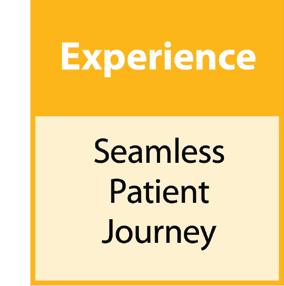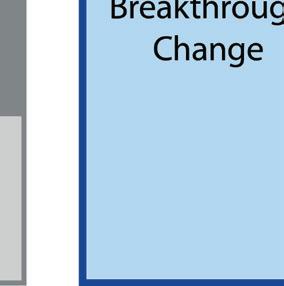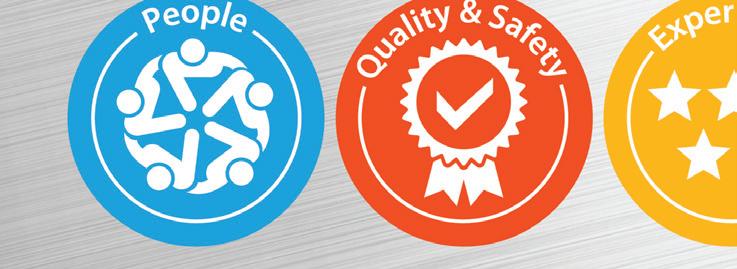ADVENTIST HEALTHCARE THROUGH
1903
Plans for a new center to extend God’s healing is financed by Ellen White, a founder of the Seventh-Day Adventist Church, who donates proceeds from the sale of her book, The Ministry of Healing.
2001
Adventist HealthCare Rehabilitation, Montgomery County’s first rehab hospital, began with 55 acute rehab beds and an outpatient department.
2006
1907
The doors of the Washington Sanitarium opens with 40 beds and 12 staff members. Overlooking the picturesque Sligo Creek, it is the first medical facility in Montgomery County, offering patients physical, mental and spiritual healing through rest, exercise and nutrition. Patients are encouraged to enjoy outdoor activities and enjoy wholesome vegetarian meals.
1988
The Sanitarium – now known as Washington Adventist Hospital – is the site for the first use of a heart-lung bypass machine to perform catheterization procedures.
2013
The Lourie Center for Children’s Social and Emotional Wellness, a place that supports healing for children and their families, becomes part of Adventist HealthCare.
The Shady Grove Aquilino Cancer Center opens as Montgomery County’s first free-standing comprehensive cancer site.
1916
Kress Maternity and Children’s Hospital opens on the hospital grounds by Dr. Lauretta Kress, the first woman to practice medicine as a licensed physician in Montgomery County. She advocates for avoiding smoking and abstaining from drinking alcohol during pregnancy.
1979
Adventist HealthCare Shady Grove Medical Center is built, bringing state-of-the-art medical care to what was then mostly rural Montgomery County.
2019
Washington Adventist Hospital relocates to its current campus and is renamed Adventist HealthCare White Oak Medical Center.
1930
The Washington Sanitarium, incorporating sunlight and integration with nature, remains a trusted sanctuary for well-being, offering a serene environment that nurtures physical, mental, and spiritual healing.
1962
The Sanitarium is the first hospital in the region to perform cardiac surgery.
2019
Fort Washington Medical Center, a community-based hospital, becomes part of the Adventist HealthCare family to ensure convenient, comprehensive care in Prince George’s County.
1949
The Sanitarium opens the first behavioral health unit in Montgomery County to provide comprehensive healing for total well-being.
2020
A few weeks before the height of the COVID-19 pandemic, Adventist HealthCare and Howard University Hospital sign an agreement to continue the 145-year legacy of caring for D.C. residents.
MISSION, VISION, RISES VALUES
OUR MISSION:
We extend God’s care through the ministry of physical, mental, and spiritual healing.
OUR VISION:
We will be the trusted choice for exceptional care in every community we serve.
Organizations often update their vision statement at the start of a new planning cycle, serving as the destination toward which all efforts are directed. This renewal keeps the vision aligned with evolving strategic priorities, long-term objectives, and the organization’s current reality.
At Adventist HealthCare, every action is intentional, which is why our new Vision statement has been carefully crafted and defined to inspire, guide us forward, and highlight what we aim to achieve.
OUR VALUES:
Respect
Integrity
Service
E xcellence
Stewardship
Our Vision Statement is a forward-looking, aspirational goal. We are setting a desired outcome, stating what we aim to become – starting today.
Trust is a foundational principle in this statement, emphasizing the importance of reliability and dependability. It conveys that we want to be the preferred option by our patients, communities, partners, physicians, and staff.
“We will be the trusted choice for exceptional care in every community we serve.”
Our focus is on providing integrated, high-quality and outstanding healthcare services across the care continuum. This sets the bar for excellence in frictionless care delivery, highlighting that the care we provide will go above and beyond standard expectations throughout each patient’s journey.
Our exceptional care will be consistent across all communities within our healthcare system, leveraging the advantages of being a coordinated healthcare network.
This underscores our ability to serve multiple communities with a cohesive process and standardized level of quality care.
Our Leadership System, referred to as “The House,” serves as one of our primary strategic advantages. This system has established a flywheel effect across our health system, cultivating a Mission-driven culture of continuous improvement. This culture has become a distinguishing factor in our market, attracting providers who seek to collaborate with us, employees who aspire to join our organization, and leaders who are eager to contribute to and influence our culture.
Mission Statement
Our purpose behind why we exist
Standard Management Approach
Our guide for leaders toward achieving success
Vision Statement
What we aim to achieve
Strategic Themes
Bigger, Better and Beyond
RISES Values
How we deliver care and conduct our operations
Pillars of Excellence
People, Quality & Safety, Experience and Finance
“Strategic planning is an exciting process that demonstrates the power of research and collaboration. With perspectives from across our organization, we can paint a vivid picture of Adventist HealthCare’s future and ensure that Nursing and other teams have the resources to bring the vision to life for our community.”
Joan Vincent Vice President Patient Care Services and Chief Nursing Officer
Our strategic planning process is guided by five core principles that collectively ensures a comprehensive and cohesive approach. These principles foster innovation, datadriven decision-making, enterprise-wide alignment, and disciplined execution, enabling us to achieve sustainable results and drive organizational success.
Collaborate:
Foster a collaborative environment by actively engaging a diverse set of stakeholders.
Explore: Consider new, innovative, and bold concepts.
Validate:
Utilize data to vet our assumptions and drive our decisions.
Align:
Drive a system-centric approach that is consistently cascaded and deployed across the enterprise.
Execute:
Commit to focused and disciplined execution of the strategy.
STRATEGIC PLANNING ANNUAL CADENCE
OCTOBER
NOVEMBER DECEMBER
JANUARY
FEBRUARY
MARCH
APRIL
MAY
JUNE
JULY
AUGUST
SEPTEMBER
Collect feedback on process from previous year and update approach
OCTOBER
Analyze performance for previous year
Annual Performance Showcase
Annual Senior Executive Strategy Steering Committee Retreat
Annual Board Meeting; Approve System Strategy Map
Annual Strategic Planning & Alignment Summit
Strategic Planning with Entities & Service Lines
Present Draft Strategy Maps to Senior Executive Team
Plan for cycle and understand Senior Leaders’ priorities for upcoming year
Develop, vet, & discuss Political, Economic, Social, Technological, Environmental and Legal (PESTEL) Scan
Finalize System Map with CEO/ Strategy Executive Committee & Board
Finalize cascading Strategy Maps with CEO
Ongoing collaboration, coordination, and alignment with Finance-led Annual Budget and Capital Allocation processes
Present Final Strategy Maps to Senior Executive Team with aligned Budget
At Adventist HealthCare our multi-year plan is refreshed every year, assessing our direction and alignment with recent societal, market and industry changes. A number of departments and functional areas work together to keep each refreshed plan true to our Vision while reflecting current realities.
“The Cardiovascular service line values the clear strategy developed in collaboration with the Adventist HealthCare Strategic Planning team. This direction helps us expand clinical care, enhance outpatient diagnostics, and foster an environment that attracts top providers, ensuring exceptional care for our patients.”
Dennis Friedman, MD Medical Director, Cardiovascular Service Line
Strategic Themes
At Adventist HealthCare, we use a strategic planning approach based on a modified version of the Kaplan-Norton model. This method helps us create a clear, visual tool called the Strategy Map, which outlines our six-year Strategic Plan. Our strategic plan defines a clear road map of where we are going and what specific goals we want to accomplish. The plan centers around our three strategic themes (Bigger, Better and Beyond) and our four Pillars of Excellence (People, Quality & Safety, Experience and Finance).
Before diving into the details of our strategic plan, understand some key components:
• Patient Requirements: Defines what our patients require from Adventist HealthCare as an organization, which helps us to clearly define our strategic goals.
• Team Member Expectations: Highlights the fact that our team members are significant stakeholders. Their expectations help inform every strategic goal.
• Goals: Captures what we are targeting to achieve as a part of Vision 2030.
• Outcomes: These are the fundamental measures of success. Outlines how we will measure our progress and success in achieving our goals.
Pillars of Excellence
BIGGER – GROWTH & EXPANSION
Goal 1:
Expand Access to Adventist HealthCare’s Mission in the DMV Region and Beyond
Outcomes (Measures of Success):
• Number of access points
• Patient volume to target
• Network integrity
Number of Access Points:
The total number of locations where patients can receive care, making it easier for people to access our services.
Patient Volume to Target:
The number of patients treated at our facilities based on established annual targets, reflecting progress toward our growth goals.
Network Integrity:
How well all our facilities and services work together to provide smooth and connected care for patients within the Adventist HealthCare network.
Patient Requirements
Access to integrated healthcare close to home
Team Member Expectations
Diverse geographic and professional growth opportunities for career flexibility
BETTER – PEOPLE
Patient Requirements
Competent, trustworthy, and compassionate care givers
Team Member Expectations
Management and coordination of the Team Member Expectations category on the Adventist HealthCare Strategy Map
Goal 2:
Be a top workplace for people to work and grow
Outcomes (Measures of Success):
• Turnover/retention rates
• Team member engagement and leadership scores
• Top performance in state and national employer recognition
Turnover/Retention Rates:
Measures how many employees stay with us or leave, which helps reflect how well we support and retain our team.
Team Member Engagement and Leadership Scores:
Tracks how engaged employees feel in their work and the effectiveness of leadership in supporting them.
Top Performance in State and National Employer Recognition:
Recognition as one of the best places to work at state and national levels, highlighting our commitment to being an outstanding employer.
BETTER – QUALITY & SAFETY
Goal 3:
Achieve consistent excellence as a High Reliability Organization
Outcomes (Measures of Success):
• Top quartile performance in Culture of Safety Index
• Top quartile performance in public facing domains
• Free from harm events
Culture of Safety:
Building a workplace where patient and team member safety are unwavering priorities.
Top Performance in Public-Facing Domains:
Achieving world-class results in publicly reported quality and patient satisfaction measures.
Free from Harm Events:
Working to eliminate harm events among both patients and team members.
Patient Requirements
High-quality, safe, trusted and equitable care
Team Member Expectations
Safe, engaging environment for our patients and team members within a just culture that is focused on excellence
BETTER – EXPERIENCE
Patient Requirements
Compassionate and coordinated care that is personalized, easy to access and easy to navigate
Team Member Expectations
The tools, resources, training and time to make every day a good day on each patient’s journey
Goal 4:
Deliver a compassionate and frictionless experience across the Patient Journey
Outcomes (Measures of Success):
• Patient experience score(s)
• Ease of access and navigating services
• Community perception
Patient Experience Score(s): Measures how patients feel about the care and service they receive, reflecting their overall experience.
Ease of Access and Navigating Services: How simple it is for patients to find, access, and use our services without barriers.
Community Perception: Tracks how likely the community is to choose and recommend Adventist HealthCare, showing trust with our services.
BETTER – FINANCE
Goal 5:
Achieve high-impact financial performance to further our Mission and enable reinvestment
Outcomes (Measures of Success):
• Meet annual total operating revenue target
• Meet annual EBITDA margin target
• 1-to-1 debt to cash ratio
Meet annual total operating revenue target:
Reaching annual target in yearly income from all operations, showing strong financial growth.
Meet annual EBITDA margin target:
Maintaining annual target earnings margin before interest, Taxes, depreciation, and amortization, ensuring financial stability.
1-to-1 Debt to Cash Ratio:
Keeping a balance where cash reserves equal or exceed total debt, reflecting financial strength, security and the ability to grow.
Patient Requirements
Reliable, modern and affordable care Team Member Expectations
Right-sized staffing of functions, investment in infrastructure, and market-competitive wages and benefits
BEYOND – INNOVATION
Patient Requirements
Personalized care model focused on a modern approach to medicine and wellness
Team Member Expectations
Culture that empowers creativity, encourages strategic risk, and allows a flexible work life
Goal 6:
Innovate to drive break-through change
Outcomes:
• Investment in innovative projects and initiatives
• Amount of incubator projects coming out of the Innovation Lab and deployed across the system
• Fully established as an academic healthcare system
Investment in Innovative Projects and Initiatives: The percentage or amount of money dedicated to new ideas and advancements to drive improvement.
Amount of Incubator Projects Deployed Across the System: The number of new ideas from the Innovation Lab successfully implemented across Adventist HealthCare.
Fully Established as an Academic Healthcare System: (Contingent on the Howard University Hospital acquisition) Achieving recognition as a leader in teaching, research and innovation within healthcare.
“Adventist HealthCare’s Vision 2030 Strategic plan positions the organization to achieve a competitive advantage by providing excellent and trusted care to our patients and becoming the best place to work in our region. With this vision, Adventist HealthCare’s brighter days are here now – and in the future.”
Emmanuel Asiedu Board Chair, Adventist HealthCare
Our Cascade and Execution Plan serves as the tactical plan that defines how we will achieve our strategic plan and, ultimately, bring our Vision to life. It translates our aspirations into actionable steps, ensuring clarity, alignment and measurable progress across every Strategic Objective and Initiative. This plan allows us to move the needle on our Outcomes (Measures of Success), which will bring us closer to achieving our Goals.
The Cascade and Execution Plan outlines key components essential for understanding the implementation of Adventist HealthCare’s Strategic Plan.
• Strategic Objectives: Identifies key activities that must be accomplished to drive the achievement of our goals. Strategic Objectives tend to be process-focused rather than outcome-focused and are regularly reassessed and adjusted when necessary to ensure constant progress.
• Initiatives: Represents the focused, manageable steps required to achieve a Strategic Objective, providing a clear path forward. By translating strategic objectives into clear actions, initiatives drive meaningful progress and results.
• Resource Requirements: Focuses on necessary materials, staffing, technology, partnerships or budget that must be in place to achieve Strategic Objectives. Resource Requirements often involve interrelated dependencies.
“At Adventist Healthcare, thoughtful planning is essential to shaping our future. We are now on track to become a stronger organization, aiming to be the trusted choice for exceptional care in every community we serve.”
Patsy McNeil, MD Executive Vice President and System Chief Medical Officer
























































































































































































